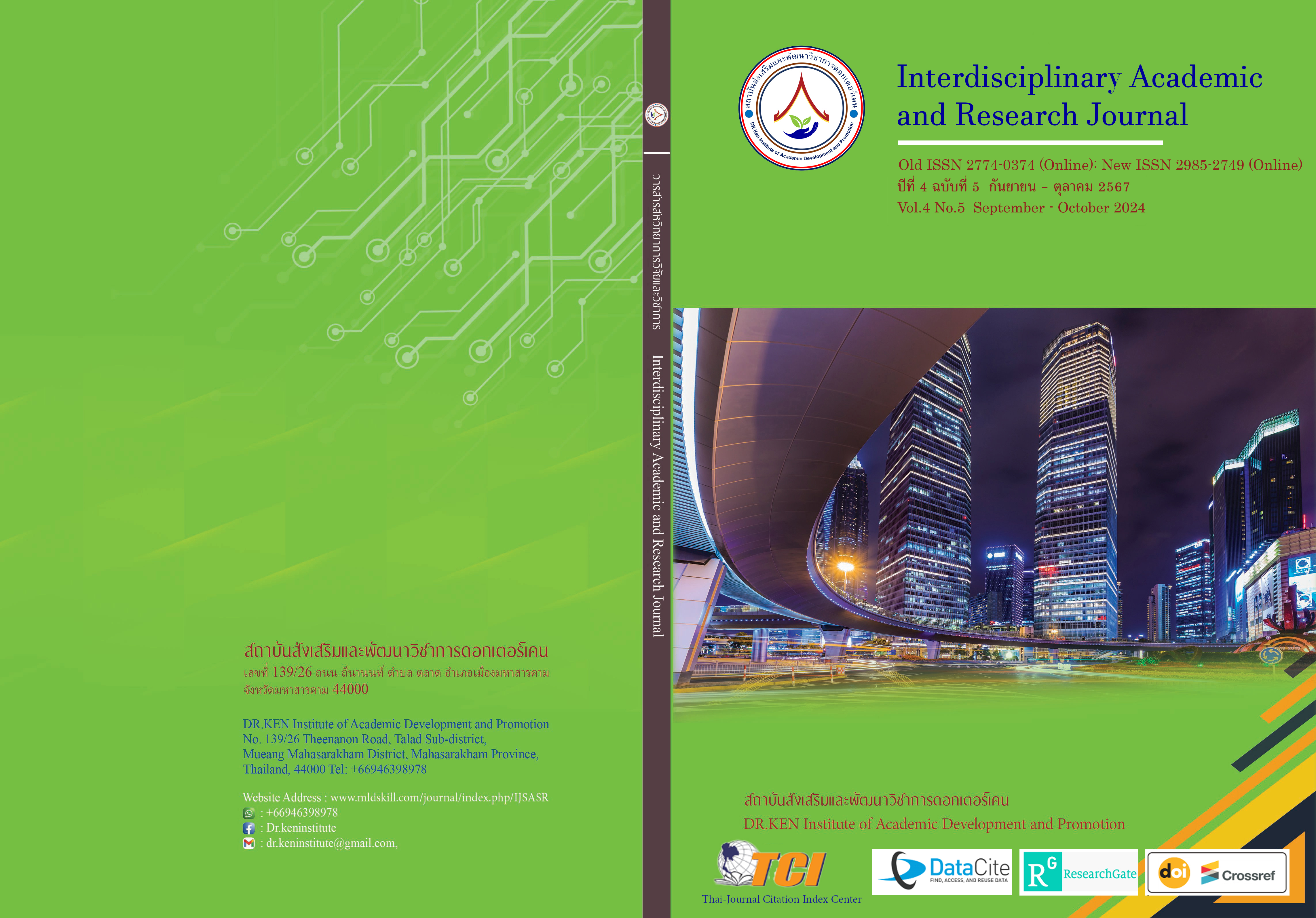Motivation for Summer Novice Ordination at Wat Pak Bor, Bangkok
DOI:
https://doi.org/10.60027/iarj.2024.278058Keywords:
Summer Novice Ordination; , Motivation; , Scale; , SummerAbstract
Background and Aims: The bulk of Thai society is acknowledged as being Buddhist, and Buddhists of all ages have long been influenced by the ideas and precepts of Buddhism. The purpose of summer novice ordination is to shape young people into good individuals who exhibit desirable behavior in line with the cultural values of Buddhism. Thus, this study aimed to (1) develop a motivation scale for summer novice ordination at Wat Pak Bor, Bangkok, and (2) compare the motivation for summer novice ordination at Wat Pak Bor, Bangkok among students with different experiences in summer novice ordination.
Methodology: In this quantitative study, data was collected using a 28-item, 5-point Likert scale questionnaire. The sample for this study included students who participated in the 51st Summer Ordination Project in 2024 at Wat Pak Bor, Bangkok. The minimum sample size calculated using the G*Power 3.1.9.7 program was 118 participants, based on an effect size of 0.50 and a power (1- β err prob) of 0.85, stratified by ordination experiences. To counteract potential data loss, the actual data collection was extended to 137 participants. Data was analyzed using descriptive statistics, including means and standard deviations, and inferential statistics through the use of the independent samples t-test.
Results: The findings showed that (1) The motivation scale for the summer novice ordination at Wat Pak Bor, Bangkok, had an item-objective congruence (IOC) index of 0.67 to 1.00 The internal consistency reliability of the scale yielded a Cronbach’s alpha of 0.86 The item-total correlations were between 0.20 and 0.71. (2) Students with different experiences in summer novice ordination showed significantly different motivations for the summer novice ordination at the 0.05 level (t=-2.50, sig= .01). The group with previous ordination experience had a higher mean score of 3.92 and a standard deviation of 0.48, compared to the group with no ordination experience, which had a mean score of 3.70 and a standard deviation of 0.51.
Conclusion: The research discovered that the Wat Pak Bor, Bangkok, summer novice ordination motivation scale was valid and dependable, with an IOC index ranging from 0.67 to 1.00 and a Cronbach's alpha of 0.86. Furthermore, motivation scores were significantly higher for students who had previously experienced ordination than for those who had not (mean scores of 3.92 vs. 3.70, respectively, p = 0.01).
References
เบญจวรรณ เลิศหตัถกิจ. (2556). การสร้างแบบวัดคุณลักษณะนักวิจัยสำหรับนักเรียนระดับชั้นมัธยมศึกษาตอนต้น. ปริญญานิพนธ์: มหาวิทยาลัยศรีนครินทรวิโรฒ.
พระครูวรกิจจาทร (ถวัลย์ นาคพิมพ์). (2567). ผู้รับผิดชอบโครงการบรรพชาสามเณรภาคฤดูร้อนประจำปี [สัมภาษณ์].
พระครูวิธานอุดมกิจ (ฉัตรชัย จงเจตดี). (2567). แนวทางส่งเสริมการบรรพชาอุปสมบทของพุทธศาสนิกชนในสังคมไทย. วารสารนวัตกรรมการจัดการศึกษาและการวิจัย, 6(1), 204-209.
พระณัฏฐกฤศ อุดมผล, กรรณิการ์ ขาวเงิน, สุนทราภรณ์ เตชะพะโลกุล, นาฎนภางค์ โพธิ์ไพจิตร์, และชมพูนุช ช้างเจริญ. (2562). แรงจูงใจในการบรรพชาอุปสมบทหมู่เพื่อถวายเป็นพระราชกุศล ในงานพระบรมศพ. วิทยาลัยพุทธศาสตร์นานาชาติ: มหาวิทยาลัยมหาจุฬาลงกรณราชวิทยาลัย.
พระธรรมกิตติวงศ์ (ทองดี สุรเตโช). (2548). ราชบัณฑิตพจนานุกรมเพื่อการศึกษาพุทธศาสน์: ชุดคำวัด. วัดราชโอรสาราม.
พระธรรมปิฎก (ป.อ. ปยุตโต). (2543). พจนานุกรมพุทธศาสตร์ฉบับประมวลศัพท์. มหาจุฬาลงกรณราชวิทยาลัย.
พระมหาสุวิทย์ ธมฺมิกมุนิ (ธีรเนตร), และธวัช หอมทวนลม. (2561). วิธีการสร้างแรงจูงใจในการบรรพชาเป็นสามเณรในสังคมไทย. วารสารบัณฑิตศึกษาปริทรรศน์, 14(2), 56-62.
พระวิสันต์ ปานเพ็ชร. (2566). แรงจูงใจในการปฏิบัติธรรมของอุบาสกอุบาสิกาในวัดศรีสุทธาวาส จังหวัด เลย. วารสารสังคมศาสตร์บูรณาการ, 3(7), 35-44.
พระโสภณคุณาภรณ์ (ระแบบ ฐิตญาโณ). (2522). พระพุทธศาสนาปริทรรศน์. โรงพิมพ์มหามกุฎราชวิทยาลัย.
มูลนิธิพุทธโฆษณ์. (2564, 15 มิถุนายน). สามเณร ผู้นำพุทธศาสนาในอนาคต. Retrieved from: https://kalyanamitra.org/th/article_detail.php?i=18942
โมลี สุทฺธิโมลิโพธิ. (2563). ลักษณะของบุคคลที่มีแรงจูงใจใฝ่สัมฤทธิ์. วารสารพุทธจิตวิทยา, 5(6), 13-17. https://so03.tci-thaijo.org/index.php/jbp/article/view/246154/167745
วชิรญาณวโรรส สมเด็จพระมหาสมณเจ้า กรมพระยา. (2531). วินัยมุข เล่ม 2. พิมพ์ครั้งที่ 22: โรงพิมพ์มหามกุฎราชวิทยาลัย.
ศิริชัย กาญจนวาสี. (2556). ทฤษฎีการทดสอบแบบดั้งเดิม. พิมพ์ครั้งที่ 7. กรุงเทพมหานคร: สำนักพิมพ์แห่งจุฬาลงกรณ์มหาวิทยาลัย.
สำนักงานคณะกรรมการวิจัยแห่งชาติ. (2564, 16 มิถุนายน). สามเณร. Retreived from: https://legacy.nrct.go.th
สุวิมล ติรกานันท์. (2555). ระเบียบวิธีการวิจัยทางสังคมศาสตร์: แนวทางสู่การปฏิบัติ. กรุงเทพฯ: จุฬาลงกรณ์มหาวิทยาลัย.
Ishii, Y. (1986). Sangha, State, and Society: Thai Buddhism in History. University of Hawaii Press.
Kabilsingh, C. (1998). Buddhist Monastic Education: Its Origin and Development in Thailand. Wisdom Publications.
Keyes, C. F. (1983). Thailand: Buddhist Kingdom as Modern Nation-State. Westview Press.
McClelland, D.C. & Burnham, D.H. (2008). Power is the great motivator. Harvard Business School Publishing.
Ryan, R.M. & Deci, E.L. (2000). Intrinsic and Extrinsic Motivations: Classic Definitions and New Directions. Contemporary Educational Psychology, 25, 54–67
Song, Y., & Yan, L. (2020). “Who is Buddha? I am Buddha.”—The motivations and experiences of Chinese young adults attending a Zen meditation camp in Taiwan. In Journal of Convention & Event Tourism (Vol. 21, No. 4, pp. 263-282). Routledge.
Swearer, D. K. (2010). The Buddhist World of Southeast Asia. State University of New York Press.
Tiyavanich, K. (1997). Forest Recollections: Wandering Monks in Twentieth-Century Thailand. University of Hawaii Press.
Downloads
Published
How to Cite
Issue
Section
License
Copyright (c) 2024 Interdisciplinary Academic and Research Journal

This work is licensed under a Creative Commons Attribution-NonCommercial-NoDerivatives 4.0 International License.
Copyright on any article in the Interdisciplinary Academic and Research Journal is retained by the author(s) under the under the Creative Commons Attribution-NonCommercial-NoDerivatives 4.0 International License. Permission to use text, content, images, etc. of publication. Any user to read, download, copy, distribute, print, search, or link to the full texts of articles, crawl them for indexing, pass them as data to software, or use them for any other lawful purpose. But do not use it for commercial use or with the intent to benefit any business.
















.png)


